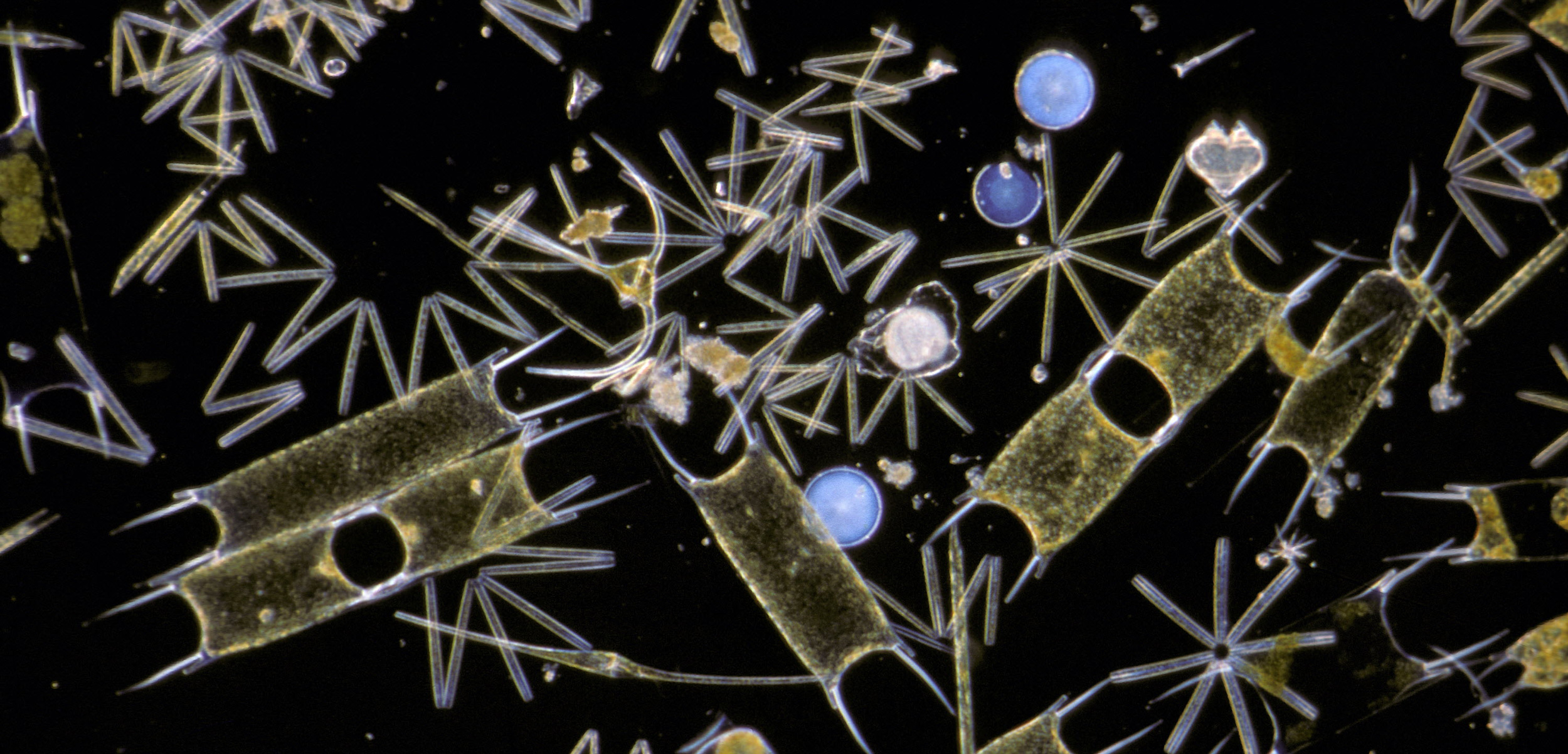Why Are There So Many Kinds of Phytoplankton?
Considering what the world looks like to a plankton offers a new path to solving the paradox of the plankton.
Article body copy
There’s a long-standing conundrum in ecology called the paradox of the plankton. Famously articulated by ecologist George Evelyn Hutchinson in 1961, the paradox explores how odd it is that there are thousands of species of phytoplankton in the upper reaches of the ocean. The top few meters of water are basically a well-mixed soup, meaning all of these species of phytoplankton are relying on the same nutrients. The theory of competitive exclusion says that one of these species ought to be a little stronger, and should out-compete the rest. But none has. Why?
Hutchinson published the paradox at the height of the Cold War, when the air was thick with debates over the values of competition and the sharing of resources. Ecological thinking was itself dominated by the idea that competition drives some species to thrive and others to go extinct. But Hutchinson saw this way of thinking as an oversimplification, and he held up phytoplankton as an example of how there must be additional forces shaping biodiversity.
Over the past few decades, ecologists have suggested many explanations for why multiple phytoplankton species persist, including the effects of rapid environmental shifts, the existence of species codependencies, the uneven distributions of phytoplankton species, and the fact that some phytoplankton release toxins that may give them an edge over the competition. But a new study by Oregon State University ecologist Michael Behrenfeld and his colleagues seeks to solve the dilemma by taking a different perspective: the plankton’s.
Phytoplankton are so small, and the distances between them so vast—from their perspective—that it’s likely phytoplankton aren’t competing at all, says Behrenfeld. If you imagine that a phytoplankton is roughly the size of a tree’s rootball, he says, the next nearest phytoplankton would be kilometers away.
A phytoplankton’s small size also means that it experiences water as a thick substance, perhaps akin to how honey feels to us. When an individual phytoplankton moves, a layer of water called the boundary layer moves with it. This means that phytoplankton spend most of their time firmly separated from each other.
“When you think of it that way, it’s like, well, how can phytoplankton that are that physically distant actually directly compete with each other?” says Behrenfeld.
Inspired by this insight, Behrenfeld decided to model phytoplankton biodiversity using an approach called neutral theory. Rather than modeling the ecosystem dynamics as competition fueled, this framework says that a community only loses species when, by chance, too many members die at the same time, and only gains species when they immigrate or when genetic mutations create them anew.
For about a thimbleful of water, neutral theory worked great—the number of species Behrenfeld’s model predicted to be present was around what scientists have observed in at-sea surveys. But when he scaled the model up to represent a larger body of water, a crack began to form.
“We have to remember that the water is being mixed continuously,” Behrenfeld says. In a world dictated by neutral theory, phytoplankton would have to die at an unreasonable rate to make room for all of the new plankton coming in from other parts of the ocean. Instead of explaining why there is more than one phytoplankton species, Behrenfeld’s neutral theory-based model predicted that there should actually be an astronomical number of phytoplankton species.
So Behrenfeld and his colleagues considered other forces that could limit the number of plankton species even in a competition-free utopia, such as how attractive phytoplankton are to predators, how fast they reproduce, and how asexual reproduction affects genetic variation within a species. Their work paid off—adding these elements to their model gave them close to the same number of species that scientists have observed in the ocean.
Nick Record, a computational ecologist at Bigelow Laboratory for Ocean Sciences in Maine, says Behrenfeld’s results highlight how the ocean’s constant churning forces scientists to come up with new ways of thinking about relationships between species. “Marine systems are really different” from those on land, he says. “And they behave in these really different ways.”
Yet Record has a different take on the paradox of the plankton. “It’s not really a paradox to be solved,” Record says. “It’s part of a narrative.”
Rather than assuming that some solutions are right while others are wrong, Record thinks that all proposed solutions to the paradox point to a bigger truth about marine ecosystems—that they are complex enough that ecologists may never find a one-size-fits-all model to describe how they function.
Perhaps the next 60 years will see just as many proposed solutions to the paradox as the last. And maybe that’s exactly how it should be when it comes to a good paradox.

